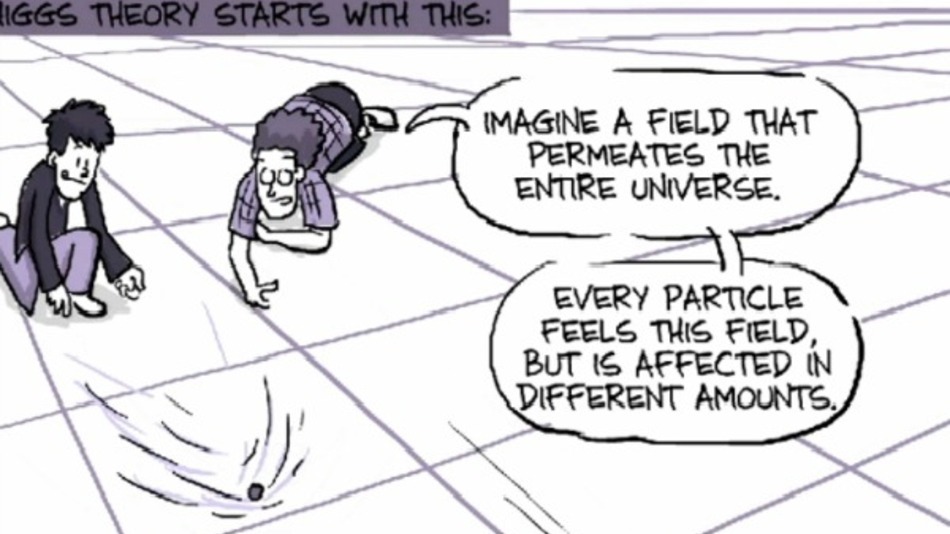The Search for the "Bloch Boson"
One of the fascinating and fundamental discoveries which long ago arose from applying quantum mechanics to the understanding of solids like metals and
semiconductors is that an electron in a material may act heavier or lighter than an electron in free space: much as previously massless particles "acquire mass" as they are buffeted through a Universe filled with Higgs bosons, the electron can acquire extra mass as it bounces around in the "crystal lattice" which makes up the
backbone of a solid. This "effective mass" idea underpins all of standard solid-state physics. Two theorists -- Pfirsch and Spenke -- nevertheless realized about 60 years ago that the situation was not so simple, and predicted that if a force could be applied quickly enough, the electron would first react as though it were in free space, until enough time went by for it to "feel the effects" of the crystal it was moving through. For over half a century, no
verification of this prediction was possible, because the timescales involved were so unimaginably short. Nowadays, however, with new ultrafast laser technologies, groups around the world are beginning to study what happens when electrons are subjected to strong, abrupt forces, and Pfirsch and Spenke's ideas may find renewed importance. In our work, we used a model system --
Rubidium atoms cooled to billionths of a degree above absolute zero and trapped in a "crystal of light" -- to test these ideas for the first time. What we found is that if one of these particles is "kicked" abruptly enough, it indeed reacts just as it would in vacuum, after which its "effective mass" begins to oscillate back and forth. Only after much time has gone by does the
particle start to behave as the usual theory would suggest. Just as colliding particles at high enough energies revealed the Higgs boson behind the masses of the elementary particles of the Standard Model, kicking Bose-condensed atoms quickly enough has revealed the dynamics behind their effective
mass in the "Bloch wavefunctions" named after solid-state pioneer Felix Bloch(*). These results offer a new perspective on one of the most fundamental aspects of electrical conduction, and may prove important to the increasingly vibrant field of ultrafast laser control of electrical currents.

(See PhD Comics for the excellent explanation of the Higgs boson from which this image is reproduced.)
Our technical article is: Rockson Chang, Shreyas Potnis, Ramon Ramos, Chao Zhuang, Matin Hallaji, Alex Hayat, Federico Duque-Gomez, J.E. Sipe, and Aephraim Steinberg, Phys. Rev. Lett. 112, 170404 (2014), also available at http://lanl.arxiv.org/abs/1303.1139
Wikipedia is a perfectly reasonable place to start reading about effective mass in solids.
Phys.org recently ran a general-level article about our experiment.
(*) In case you're curious, if one really wanted to stretch the analogy, the mass of the "Bloch boson" in a solid like Silicon would be about 100 billion times smaller than the mass of the recently discovered Higgs boson; the mass of the Bloch boson in our ultracold Rubidium system would be yet again 100 billion times smaller than that!
Back to Aephraim's home page
